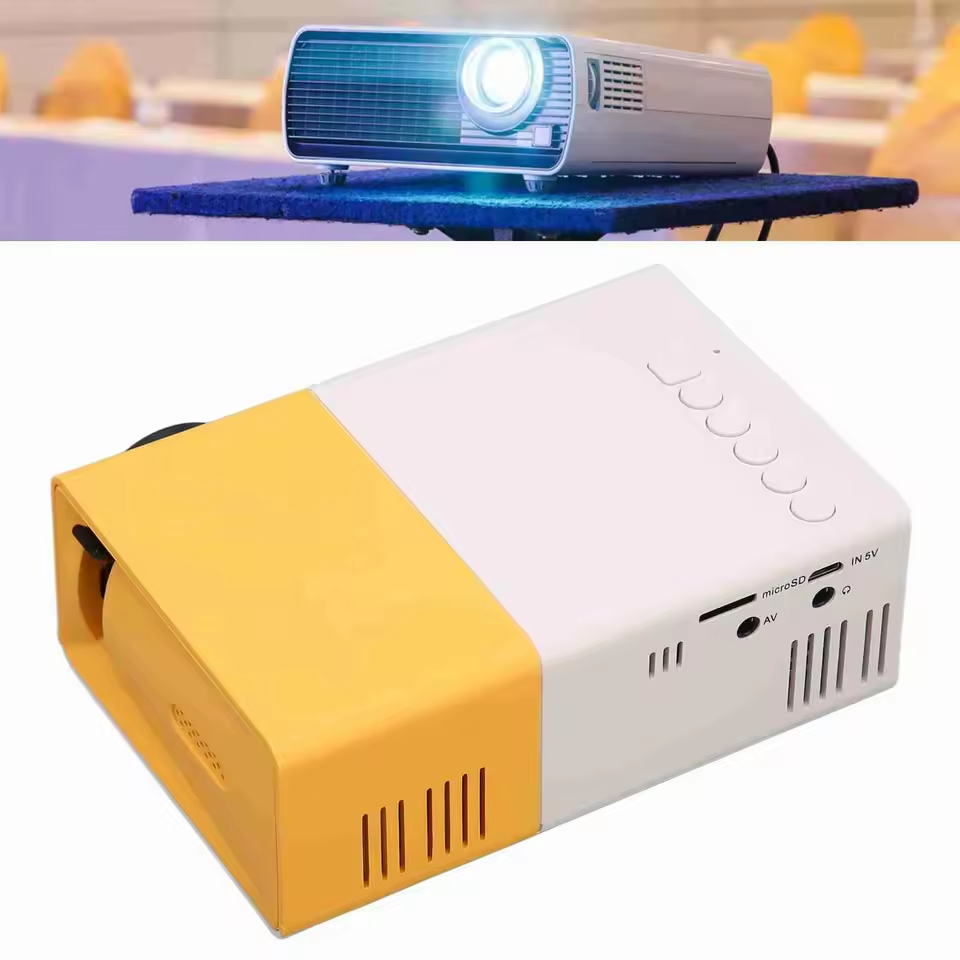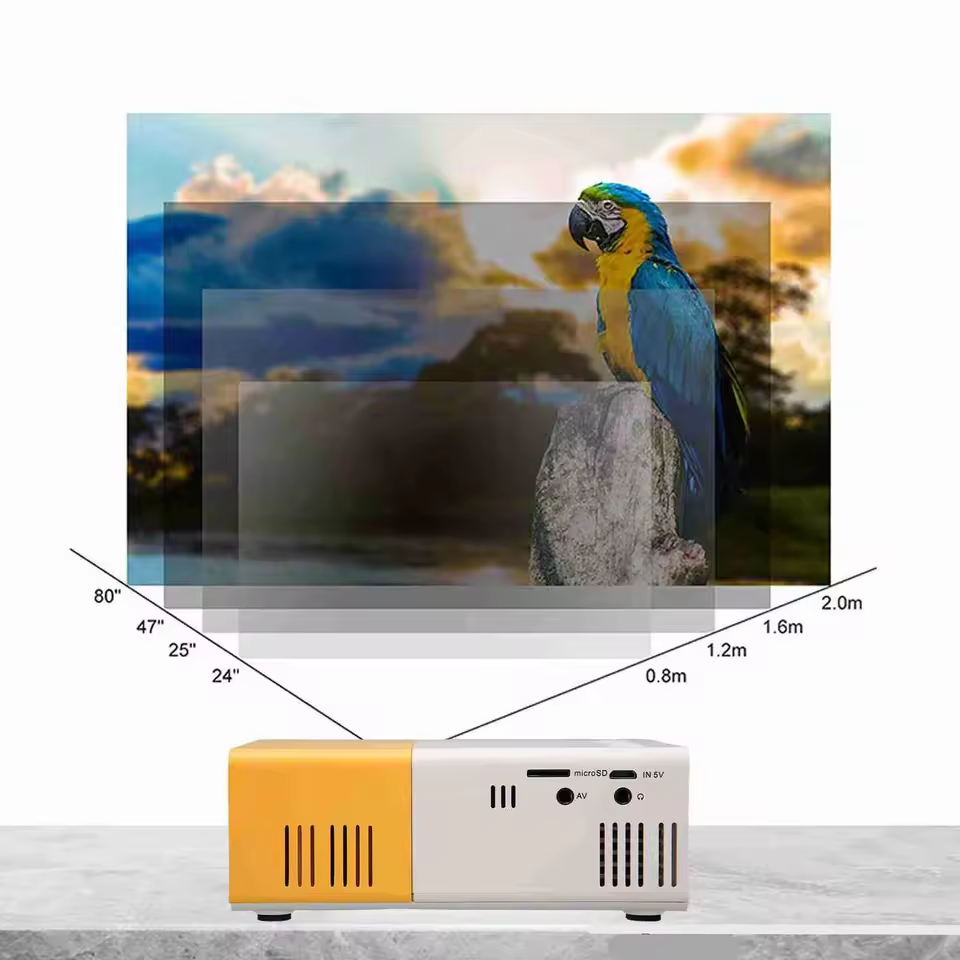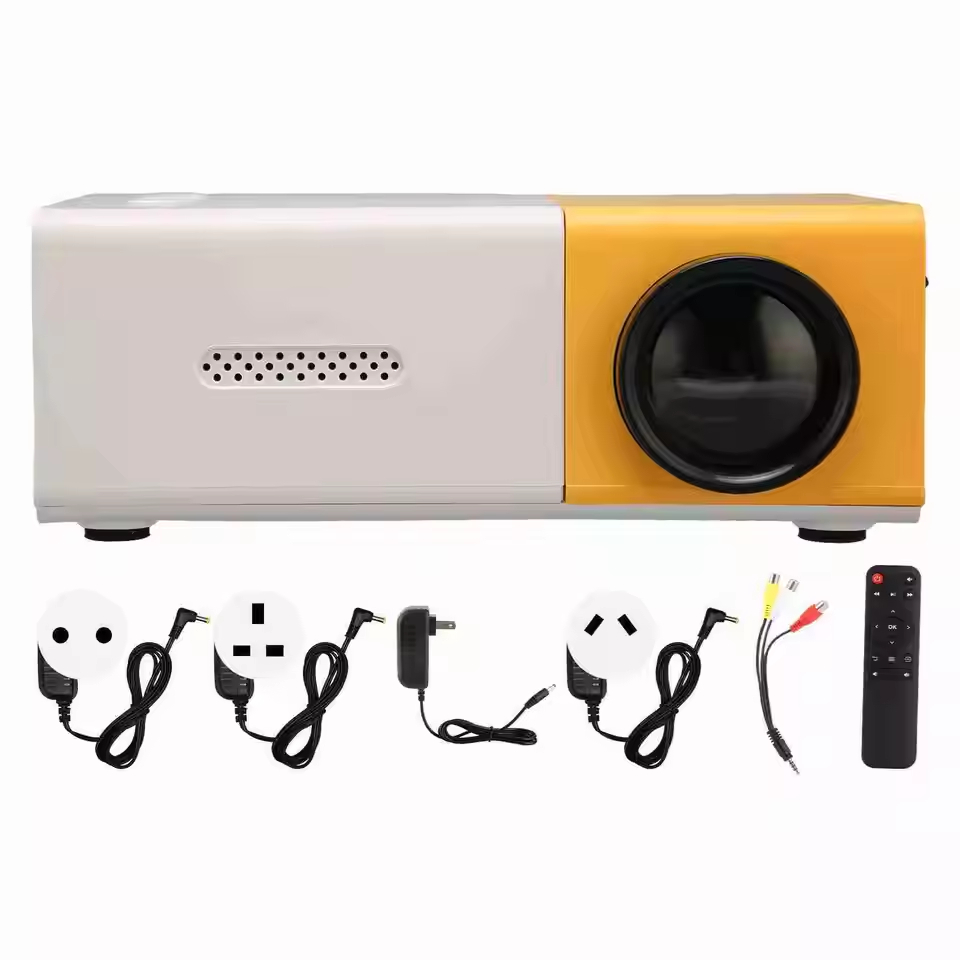Introduction to Smart Projectors
Smart projectors have revolutionized entertainment by turning any space into a dynamic viewing area. Unlike traditional overhead projectors, these devices combine high-resolution displays with smart connectivity, offering unmatched versatility for home theaters, travel, and presentations. A smart projector functions as a standalone entertainment hub—streaming movies, playing games, or displaying documents wirelessly—without requiring a separate TV or computer.
Key features set them apart:
- Built-in Streaming: Access platforms like Netflix or YouTube directly via Wi-Fi.
- Portability: Compact designs (often weighing under 3 lbs) make them ideal for camping or road trips.
- Auto Focus & Keystone Correction: Adjusts to uneven surfaces automatically for crisp images.
Their appeal lies in adaptability. Whether projecting a movie on a bedroom wall, hosting a backyard cinema, or presenting to a team via screen mirroring, smart projectors eliminate the need for bulky setups. They also excel in brightness (up to 2000+ lumens) and resolution (1080p–4K), ensuring clarity even in well-lit rooms.
As technology advances, smart projectors continue to redefine entertainment by blending portability, power, and connectivity—proving they’re more than gadgets; they’re gateways to immersive experiences anywhere.
Key Features of Smart Projectors
Smart projectors distinguish themselves through innovative features that prioritize convenience and adaptability. Here’s a breakdown of what sets them apart from traditional overhead projectors:
1. Built-in Streaming & Apps
Unlike older projectors requiring external devices, smart projectors come preloaded with apps like Netflix, YouTube, and Hulu. This eliminates the need for a separate media player or HDMI connection, making them ideal for on-the-go entertainment.
2. Wireless Connectivity
- Wi-Fi: Stream content directly from the internet.
- Bluetooth: Pair with speakers or headphones for immersive sound.
- Screen Mirroring: Cast content from phones/tablets via HDMI or USB-C.
3. Portability & Design
Compact and lightweight (often under 3 lbs), smart projectors are travel-friendly. Many include rechargeable batteries (2–6 hours of runtime), perfect for outdoor movie nights or presentations on the go.
4. Auto Focus & Keystone Correction
- Auto Focus: Instantly sharpens images without manual adjustments.
- Keystone Correction: Adjusts trapezoidal distortions when angled, ensuring square images on uneven surfaces.
5. Resolution & Brightness
- Resolution: Options range from 1080p (Full HD) to 4K Ultra HD for crystal-clear visuals.
- Brightness: 1500–2000+ lumens ensure clarity even in well-lit rooms.
6. Voice Control
Integrate with Alexa or Google Assistant for hands-free adjustments—pausing, volume control, or switching inputs.
7. Versatile Inputs
Support for HDMI, USB-C, and USB ports accommodates gaming consoles, laptops, and external storage devices.
Final Edge
These features transform smart projectors into multifunctional devices, offering far more than basic projection. Whether for home theaters, travel, or business, their all-in-one design outperforms older technologies, making them essential for modern entertainment.
Types of Smart Projectors
Smart projectors cater to diverse needs, from home entertainment to professional presentations. Here’s a breakdown of the main categories:
1. Home Theater Projectors
Designed for immersive home cinemas, these smart projectors prioritize high resolution (4K) and brightness (2000–3000 lumens). Features like HDR support and built-in speakers enhance movie nights. Ideal for dedicated media rooms.
2. Portable/Travel Projectors
Ultra-compact (often under 2 lbs) and battery-powered (2–6 hours runtime), these projectors excel for camping, road trips, or small gatherings. Lower brightness (500–1500 lumens) suits dim environments.
3. Business/Educational Projectors
- Key Features: HDMI/USB ports for laptop connectivity, higher brightness (1500–2500 lumens), and keystone correction.
- Use Case: Presentations, classrooms, or meetings. Outperforms traditional overhead projectors with wireless screen mirroring.
4. Outdoor Projectors
Built for bright settings, these models boast 3000+ lumens and rugged designs. Waterproof variants withstand weather, enabling backyard movie nights or outdoor events.
5. 4K/High-End Projectors
Packed with premium features like 4K resolution, laser lighting (for longer life), and Dolby Atmos compatibility, these projectors deliver theater-quality visuals at home.
Choosing the Right Type
- Home Use: Prioritize brightness and resolution.
- Travel: Opt for portability and battery life.
- Business: Focus on connectivity and durability.
Each type leverages smart projector technology to redefine versatility, proving they’re no longer just tools but lifestyle accessories.
Setting Up Your Smart Projector
Setting up a smart projector is simpler than older technologies like overhead projectors, requiring minimal technical know-how. Follow these steps for a seamless experience:
1. Choose Placement
- Position the projector 3–10 feet from the wall or screen, depending on desired image size (larger distances require higher lumens).
- Ensure the surface is flat and unobstructed.
2. Power and Connectivity
- Plug in the projector and turn it on.
- Connect to Wi-Fi via the on-screen menu or remote.
3. Focus and Adjustment
- Use the manual focus ring or auto-focus button to sharpen the image.
- Adjust keystone correction to fix trapezoidal distortions if angled.
4. Wireless Pairing
- Bluetooth: Pair with speakers for better audio.
- Screen Mirroring: Cast content from phones/tablets via HDMI or Wi-Fi Direct.
5. Test the Image
- Play a test video to ensure brightness and contrast meet your needs. Adjust settings via the menu.
6. External Device Setup
- Use HDMI/USB-C cables to connect gaming consoles, laptops, or hard drives.
Troubleshooting Tips
- Blurry Image: Re-focus or move the projector closer.
- Weak Sound: Invest in external speakers for richer audio.
With these steps, your smart projector is ready to transform any space into a personalized entertainment zone.
Smart Projector Use Cases: Home, Travel, and Beyond
Smart projectors transcend traditional overhead projectors by offering versatile applications across settings:
1. Home Entertainment
- Cinematic Experiences: Turn living rooms into theaters with 4K resolution and built-in streaming apps.
- Gaming: Connect via HDMI for immersive gameplay with large-screen visuals.
- Home Office: Present documents or host virtual meetings with screen mirroring.
2. Travel & Outdoor Adventures
- Camping: Watch movies under the stars using waterproof, portable models with battery life (2–6 hours).
- Road Trips: Add entertainment to car rides with compact projectors in campgrounds.
3. Business/Presentation Use
- Wireless Presentations: Cast slides or demos directly from laptops without tangled cables.
- Team Meetings: Use high-brightness models (1500+ lumens) for clear visuals in well-lit rooms.
4. Creative & Educational Uses
- Art Displays: Project digital art or slideshows for home galleries.
- Classroom Tools: Engage students with interactive content via apps or USB presentations.
5. Beyond Expectations
- Fitness: Mirror yoga tutorials or workout videos onto walls.
- DIY Lighting: Use ambient projectors to cast decorative patterns on ceilings.
With their adaptability, smart projectors redefine entertainment and productivity, proving they’re tools for both relaxation and innovation.
Smart Projector vs Overhead Projector: A Direct Comparison
While both projectors display images, smart projectors and overhead projectors differ vastly in technology, features, and usability:
| Feature | Smart Projector | Overhead Projector |
|---|---|---|
| Connectivity | Wi-Fi, Bluetooth, HDMI for streaming and mirroring | Requires physical transparencies/slides |
| Portability | Lightweight (2–3 lbs), battery-operated | Bulky, non-portable |
| Resolution | 1080p–4K for crisp visuals | Lower resolution, grainy images |
| Setup | Auto-focus, keystone correction | Manual adjustments needed |
| Content Sources | Built-in apps (Netflix), USB, or streaming | Limited to physical slides |
| Cost | Moderate to high upfront cost | Lower initial cost but higher long-term expenses |
Key Differences Explained
- Connectivity: Smart projectors wirelessly stream content or mirror devices, while overhead projectors rely on physical slides, limiting interactivity.
- Portability: The compact design of smart projectors makes them ideal for travel, unlike bulky overhead projectors.
- Modern Features: Voice control, auto-adjustments, and app integration are exclusive to smart projectors, offering a futuristic edge.
Use Case Suitability
- Smart projectors excel in home theaters, travel, and presentations needing dynamic content.
- Overhead projectors are obsolete for most modern needs but might still serve niche educational uses.
In today’s tech-driven world, smart projectors outperform overhead projectors across functionality, convenience, and versatility.
Buying Guide: Choosing the Right Smart Projector
Selecting the perfect smart projector depends on your needs, budget, and usage scenarios. Follow this guide to avoid common pitfalls:
1. Brightness (Lumens)
- Home/Outdoor: Opt for 1500–3000 lumens to combat ambient light.
- Dark Rooms: Lower brightness (500–1000 lumens) suffices for travel or camping.
2. Resolution
- Basic Use: 1080p (Full HD) works for casual viewing.
- Premium Quality: Choose 4K Ultra HD for home theaters.
3. Portability
- Travel: Lightweight (under 3 lbs) and battery-powered models (2–6 hours runtime).
- Home Use: Prioritize features over size.
4. Connectivity Options
- Ensure compatibility with your devices (HDMI, USB-C, Bluetooth).
- Built-in streaming apps reduce the need for external devices.
5. Budget Considerations
- Entry-Level: 150–300 for portable models.
- High-End: $500+ for 4K resolution and premium audio.
6. Avoid Common Mistakes
- Ignoring Lumens: A 1000-lumen projector struggles outdoors.
- Overlooking Speakers: Pair with external audio for richer sound.
Final Tip
Compare models like the Anker Nebula Capsule (portable) or BenQ HT3550 (4K) based on your priorities. Unlike outdated overhead projectors, modern smart projectors prioritize user-friendliness—so invest wisely for lasting satisfaction.
Conclusion: Why Smart Projectors Are the Future of Entertainment
Smart projectors have redefined entertainment by merging cutting-edge technology with unparalleled versatility. Unlike outdated overhead projectors, these devices offer wireless streaming, portability, and adaptability, making them indispensable for modern lifestyles.
Their ability to transform any space into a cinema, home office, or outdoor theater underscores their future-proof appeal. Features like built-in apps, auto-focus, and high brightness cater to diverse needs—from immersive movie nights to professional presentations.
As technology evolves, advancements in resolution (4K), battery life, and AI integration will further cement their role in entertainment. With their compact design and eco-friendly benefits (reducing e-waste compared to multiple screens), smart projectors align with sustainability trends.
Whether for casual use or innovation-driven applications, these devices prioritize convenience without compromising quality. In a world craving flexibility, smart projectors stand out as the ultimate tool for anyone seeking boundaryless entertainment and productivity.